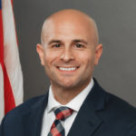Authors
Steven Posnack

Steven Posnack serves as the Deputy National Coordinator for Health Information Technology.
Prior to this role he served as executive director of the Office of Technology. In this role, Mr. Posnack advises the national coordinator, leads the ONC Health IT Certification Program, and directs ONC’s standards and technology investments through the ONC Tech Lab, which organizes its work into four focus areas: pilots, standards coordination, testing and utilities, and innovation. He led the creation of the Interoperability Standards Advisory, the redesign of ONC’s Certified Health IT Product List (CHPL), created the Interoperability Proving Ground, and developed the C-CDA Scorecard.
Prior to serving as the director of the Office of Standards and Technology, Mr. Posnack led ONC’s federal policy division within the Office of Policy and Planning from 2010 to 2014. In this capacity, he led ONC’s regulatory affairs, legislative analysis, and several federal policy development and coordination activities. From 2005 to 2010, he served as a senior policy analyst within ONC’s Office of Policy and Research. In that position, he co-authored the Nationwide Privacy and Security Framework for Electronic Exchange of Individually Identifiable Health Information. He also led a cross-HHS policy team that worked with the Drug Enforcement Agency (DEA) as it developed its regulation for the electronic prescribing of controlled substances (EPCS).
Mr. Posnack earned a Bachelor’s degree in computer science from Worcester Polytechnic Institute, a Master’s degree in security informatics from Johns Hopkins University Information Security Institute, and a Master’s degree in health policy from Johns Hopkins University Bloomberg School of Public Health. He also maintains a Certified Information Systems Security Professional (CISSP) certificate.
Steven Posnack's Latest Blog Posts
Steven Posnack | October 8, 2021
Astute readers of the Health IT Buzz Blog (are there any other kind?) and those familiar with ONC’s 21st Century Cures Act (Cures Act) Final Rule will recall that we’ve talked a lot about the United States Core Data for Interoperability (USCDI). ONC’s Cures Act Final Rule adopted USCDI version 1 as a standard, thereby establishing a new baseline for the data elements required to be accessible through certified electronic health record (EHR) technology.
Read Full Post.
Steven Posnack | July 29, 2021
In 2018, the United States was at a turning point with respect to the adoption and implementation of the Health Level Seven (HL7®) Fast Healthcare Interoperability Resources (FHIR®) standard in health information technology (health IT). At that time, our analysis, outlined in a previous blog post predicted that the U.S. could soon see widespread adoption of certified application programming interface (API) technology enabled with FHIR. The results are in, and the findings are encouraging.
Read Full Post.
Steven Posnack | June 16, 2021
As we continue to learn more about all of the factors that affect our health, where we live has proven to become more insightful over time. Our ability to study and measure health impacts, conduct public health monitoring across communities, deliver medications safely to patients, and a number of other efforts rely on the availability and accuracy of patient address data. Clinicians, researchers, and public health professionals must also have the ability to successfully link disparate records,
Read Full Post.
Steven Posnack | May 13, 2021
One of the fun parts about working at the Office of the National Coordinator for Health Information Technology (ONC) is that in addition to our impactful, near-term work, we also have the chance to point our eyes to the horizon and envision a better future. Throughout my tenure at ONC, different policy, technology, and legislative moments along with ample public feedback have shaped our actions. Yet, there always comes a time to ask, “what’s next? what are we driving toward?
Read Full Post.
Steven Posnack | May 4, 2021
Over six years ago, ONC embarked with all of you on an ambitious initiative to create a shared, nationwide interoperability roadmap (the Roadmap). In typical fashion, we produced a draft, many of you shared your comments (about this time in 2015), and we released the final Roadmap in October, 2015.
Read Full Post.

